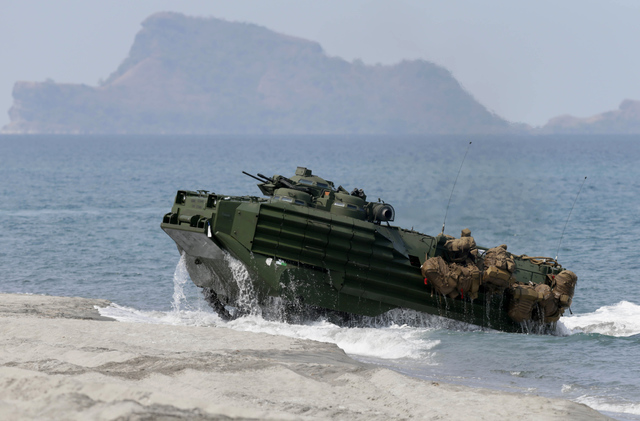HONOLULU — Amphi-bious military capabilities are on the agenda as the U.S. Marine Corps and Navy host defense leaders from around the Pacific in Hawaii this week. The first-of-its-kind meeting comes as territorial disputes over islands are growing more heated
HONOLULU — Amphi-bious military capabilities are on the agenda as the U.S. Marine Corps and Navy host defense leaders from around the Pacific in Hawaii this week. The first-of-its-kind meeting comes as territorial disputes over islands are growing more heated in the region.
U.S. treaty allies Japan and the Philippines are expected to attend along with U.S. partners like Malaysia, Singapore and Vietnam. Altogether, 23 nations will join the meeting.
China wasn’t invited, even though it has one of the region’s fastest-growing militaries. A U.S. law restricting the types of military exercises the U.S. and China may engage in together prevented China’s inclusion, Marine Corps Col. Nathan Nastase said.
Organizers aim to discuss how the militaries may develop amphibious capabilities and operate together, Nastase said. They hope to find out what each country’s amphibious needs are and learn how each nation might be able to help others.
“How can that potentially complement us or your neighbors or a group of like-minded nations to help each other out? In times of crisis, in times of humanitarian disaster?” Nastase told reporters last week.
Participants will also have an opportunity to watch U.S. Marines and sailors demonstrate landing forces on a Hawaii beach.
Nastase, the director of plans and policies at U.S. Marine Corps Forces Pacific, said participants range from South Korea, which has a large and capable marine corps, to Malaysia, which aspires to develop amphibious capabilities.
Japan’s forces are in between: It has been training soldiers in amphibious warfare during the past few years as it seeks to be able to defend small islands to its south in the East China Sea. Japan controls the rocky islets it calls Senkaku, but Beijing also claims them. China calls the islands Diaoyu.
Territorial disputes like this and another over a different set of small islands in the South China Sea are one factor prompting growing interest in amphibious
training, said Tim Huxley, the
executive director of the International Institute for Strategic Studies-Asia.
“There’s increasingly an emphasis on protecting territorial claims and claims to islands and other small features,” Huxley said by telephone from Singapore.
Six parties have overlapping claims in the South China Sea: Brunei, China, Malaysia, the Philippines, Taiwan and Vietnam. The area includes busy sea lanes and rich fishing grounds, and it is believed to have large undersea deposits of oil and natural gas.
China in recent years has dispatched more vessels and patrols to stake its claim, alarming neighbors. Satellite images have shown massive reclamation work on seven islands, which the Philippines and the U.S. say could be used to build bases for refueling naval and air patrols and establishing a stronger military presence.
Beijing says the reclamation is occurring on Chinese territory and the structures are for public-service use and to support Chinese fishermen.
Countries are also interested in developing amphibious skills to help them deliver disaster relief and other humanitarian assistance, Huxley said.



